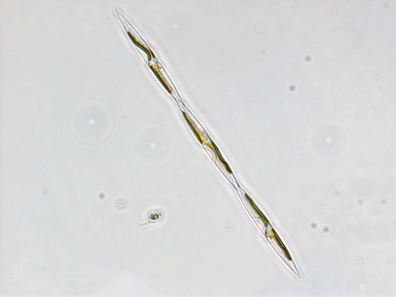Harmful Algal Blooms
Microscopic algae support marine food webs, however blooms of some types of these algae can produce toxins and have harmful impacts on water quality, marine ecosystems, and human health. Harmful algal blooms (HABs) have increased in frequency and intensity off the coast of California over the past several decades, resulting in fisheries closures, fish kills, and severe impacts on marine mammals. Recently, major HAB events have occurred in 2015, 2022, 2023, and 2024.
California has numerous agencies, including the Department of Public Health, California Department of Fish and Wildlife, and the Office of Environmental Health Hazard Assessment, that monitor for HABs and take action to protect public health. OPC works with our partner agencies to improve HAB preparedness, monitoring, and response in California.



Our Work
OPC works with across state, federal, and academic partners to better coordinate HAB response and identify policy and management improvements.
- Harmful Algal Bloom Workshop (2018) – OPC and Ocean Science Trust co-hosted a workshop on March 22-23, 2018, in partnership with California’s Interagency Harmful Algal Bloom Task Force (HAB Task Force), to discuss how scientific understanding of HABs can be used to inform domoic acid monitoring for seafood safety in California. The discussion also included lessons learned from seafood safety monitoring programs in Oregon, Washington, and the federal jurisdictions.
- Framing the Scientific Opportunities on HABs and California Fisheries – The working group developed a short-term scientific guidance report to frame the scientific opportunities on HABs and California fisheries. This report has been used as a guide for funding additional research.
- HABs and Fisheries Frequently Asked Questions – In 2016, OPC provided funding for the OPC’s Science Advisory Team to develop a report responding to frequently asked questions about HABs by the fishing and regulatory communities.
Featured Projects
- Real-time tracking and early warning system for HABs in California – In 2019, OPC approved funding to the University of California, San Diego to support the creation of an automated real-time tracking and early warning system for HABs in California. OPC funds supported the deployment of a network of “imaging-flow cytobots” (IFCBs) which are submersible, high-resolution underwater microscopes able to take real-time images while instantaneously transmitting phytoplankton counts and size to scientists’ computers. Data produced by the IFCB network go into the Harmful Algal Bloom Data Assembly Center (HABDAC), an online, publicly available resource that provides HAB monitoring data and daily alerts to provide managers and the public with early warnings ahead of HAB events.
- Understanding the drivers of toxic Pseudo-nitzschia blooms – In 2018, OPC approved funding to the University of Southern California to research the interactive impacts of nutrients, temperature, and carbonate chemistry on toxic Pseudo-nitzschia blooms. The project’s results demonstrated that interactions between these drivers, as well as different conditions (e.g. heatwave, upwelling), impact toxicity differently.
- Advancing portable detection capabilities of HAB species in California waters – In 2018, OPC approved fundingto San Jose State University to make genetic detection assays available on a portable instrument for near real-time detection of HABs in the field. This technology can be used for on-site testing for the presence of 11 harmful algal bloom species as a first pass to inform further analyses, as needed, and provides an efficient way to “take the lab to the field” in support of human and ecosystem health.
Resources
California maintains a statewide Harmful Algal Bloom Monitoring and Alert Program (HABMAP), which collects weekly phytoplankton and water quality data at ten locations along the California coast from San Diego to Santa Cruz.
The California-Harmful Algae Risk Mapping (C-HARM) Model supports HAB forecasts by generating near-term predictions of HAB conditions that can inform future long-term coastal modeling efforts to project the habitat range and occurrence of toxic HABs. Predictions are generated daily to provide a forecast of where HABs or domoic acid events may be encountered in the next 1-3 days.
Related Program Updates
Staff Contact

Kyla Kelly
Water Quality Program Manager
Kyla.Kelly@resources.ca.gov




